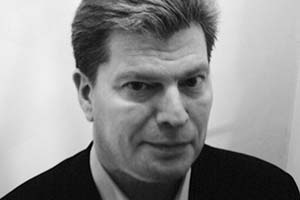
When Cary met Pastry: Cary Grant's friendship with Richard Hearne
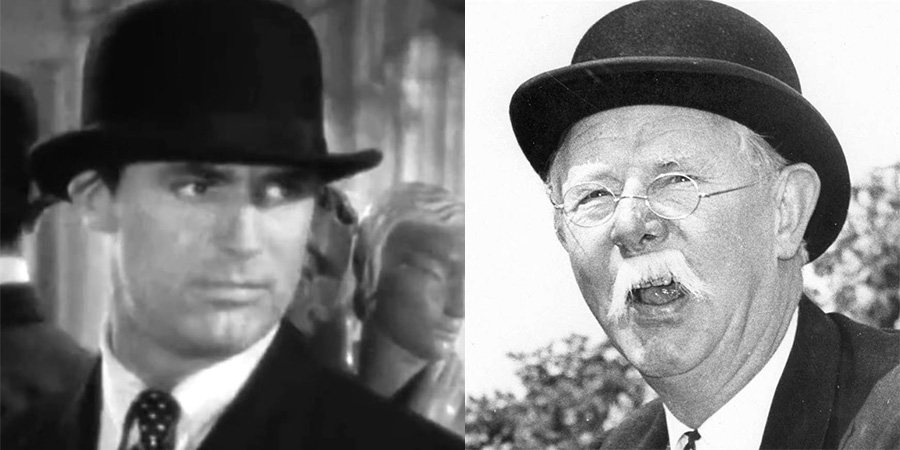
Cary Grant, it will come as no surprise, tended to socialise in extremely stylish circles: Fred Astaire, Sophia Loren, Noël Coward, Ingrid Bergman, Frank Sinatra, Howard Hughes, Audrey Hepburn, Cole Porter, Grace Kelly - everyone on the list tended to be, in some or other way, a very special VIP indeed. The name of one of the others included, however, might now strike you as rather surprising. It was Richard Hearne, otherwise known as Mr Pastry, one of Britain's greatest specialists in slapstick.
Grant and Hearne, in terms of their respective public images, certainly made for an unlikely pair. Here was Grant, the most sophisticated of all Hollywood's leading men, the epitome of worldly elegance, urbane wit and unforced grace and good taste, and there was Hearne, a veteran of England's music hall, an icon of knockabout comedy confined within a context of custard pies, buckets of cold water and countless clumsy pratfalls. Behind such stark contrasts, however, there was common ground, and a common comic spirit.
Both, to begin with, were British. Cary Grant was born Archibald Leach in Bristol in 1904; Richard Hearne came into the world in Norwich in 1908.
Both of them, as young boys, were taken to the theatre and were captivated by entertainment acts. Both, from that point on, were desperate to get on the stage themselves.
Archie Leach joined a knockabout troupe of acrobats (first auditioning for them in Hearne's native Norwich), trained in every aspect of athletic comedy technique, and promptly toured the halls. There were few variety theatres that (from a base in London's Brixton Road) he didn't visit during these early years, taking part in highly energetic, and sometimes quite dangerous, ensemble routines, as well as more conventional comedy sketches.
Hearne joined a circus, where he appeared for a while alongside his acrobat father (a celebrated 'hand balancer') in the comedy double act 'The Two Hearnes', and then made his own way to the music halls as a solo act. Billed initially as 'The Upside-Down Marvel' ('The man that can do more with his hands than you can do with your feet'), he displayed an extraordinary ability to leap up and fly through the air, as well as tumble, dance, tell stories and perform mime, quickly establishing himself as one of the most admired young physical comedians on the provincial circuit.

The two young men crossed paths a couple of times while touring through the provinces, pausing to watch each other's act from the wings. No direct contact, it seems, was made, but the seed of mutual respect was sown.
In 1920, Leach went with the Pender troupe on an American tour, and, once it was completed, he decided to stay there. He did a stilt-walking routine at Coney Island, travelled the vaudeville circuit as part of another acrobatic act, and then started getting work as a leading man in musicals.
Back in England, Hearne continued to tread the boards as a comedy tumbler and eccentric dancer, while also playing the odd supporting role in plays and pantomimes. He picked up sound advice from a variety of sources - the more experienced comedian George Robey, for example, taught him how to project his voice, and another veteran, Carl Brissel, helped him improve as a mime, while the actor Fay Compton encouraged him to work more on his characterisations - and he developed into an increasingly confident and crafty entertainer.
By the 1930s, Leach had moved across America to California, been signed up by a Hollywood studio and changed his name to Cary Grant. With his new employers keen to test his range of talents, he spent the next few years being tried out in most of the popular genres, from sober-minded dramas to light and frothy musicals, with plenty of comedy in between.
Hearne, meanwhile, was attempting to make a similar transition from stage to screen. He was by now a popular and widely-praised figure on the West End stage as a member of the actor/producer Leslie Henson's unofficial repertory company based at the Gaiety Theatre. Often appearing alongside the portly comedian Fred Emney, Hearne had been one of the highlights in a succession of Henson-led comedies and musicals, playing everything from ageing butlers to staggering drunks, making full use of his acrobatic skills to steal the scenes and spark the applause.
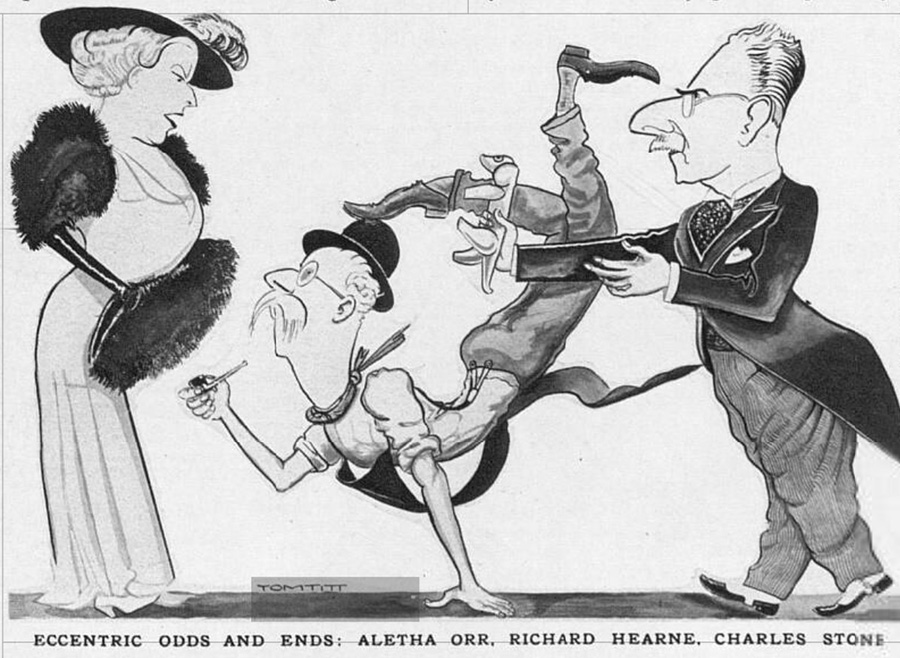
Responding to such widely-publicised successes, the producer Herbert Wilcox signed Hearne up in 1936 to a movie contract with a view to turning him into one of British cinema's biggest new comedy stars. The first step towards this goal was a light little satire called Millions, which saw Hearne depart from his usual heavily made-up stage roles to play someone much more his own age: a happy-go-lucky young man-about-town named Jimmy Forbes, with Gordon Harker as his disapproving millionaire father.
The critics loved him in this more naturalistic kind of part, with one suggesting that (rather like Grant was now starting to do in his Hollywood comedy movies) he combined 'the hopeless incompetence of Stan Laurel in a man young and good-looking enough to be a romantic lead'. Unfortunately, however, Hearne's movie career would not progress much further, mainly because Wilcox seemed unsure as to how best to build on this promise and use (or limit) his versatility, switching him repeatedly between leading man material and characterful supporting roles in a series of rushed and cheaply-made productions.
While Cary Grant was now going from strength to strength in the cinema of the other side of the Atlantic, starring in a string of such richly satisfying movies as The Awful Truth (1937), Bringing Up Baby (1938), Gunga Din and Only Angels Have Wings (both 1939) and His Girl Friday and The Philadelphia Story (both 1940), a somewhat deflated Hearne was reverting back to the stage as his primary professional focus for what his fans called his 'first-rate fooling'. His friend Leslie Henson would continue to look to feature him in whatever productions he promoted, and a solo spot in the 1938 Royal Variety Performance showed how highly rated he remained in the theatre world.
The outbreak of war saw both men support the cause of their country. Grant played a discreet role overseas for British Intelligence (for which he later received the King's Medal) while promoting his home nation's needs in America. Hearne was one of the most defiant of London's entertainers, frequently staying on stage during air raids to keep the audience calm and maintain the mood of 'business as usual'.
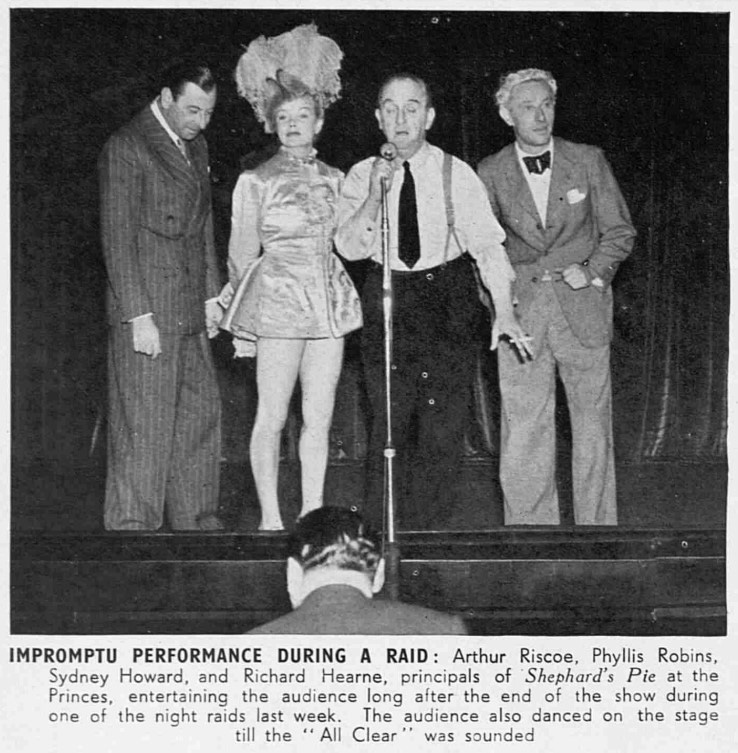
Grant, by this stage, was well-established as one of Hollywood's biggest stars, but Hearne would soon be riding his own wave of fame. It was in the 1945 West End musical-comedy Big Boy that he formally introduced the character with whom he would be associated for the rest of his life: Mr Pastry.
His regular patron Leslie Henson had called him up and asked: 'Would you like to take on the part of a silly old man of seventy?' Since Hearne had been playing silly old men of about seventy (amongst other types) for more than a decade prior to Henson's latest invitation, he was happy enough to agree.
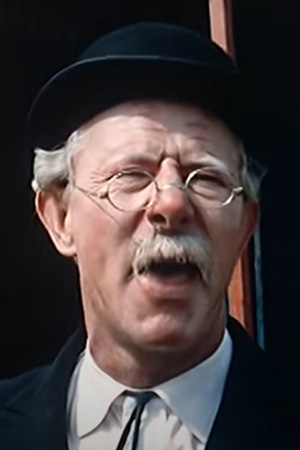
This time, however, the character acquired a name ('"Mr Pastry" sounded so right,' he would later say, 'that I never tried to think of anything else'), and a more distinctive look (black bowler hat, snow-white crinkled hair and drooping white moustache, round wire-rimmed glasses and a black frock coat), that would soon crystallise into something iconic. The elderly manservant of Fred Emney's character, the Pickwickian department store managing director Sir Frederick Bolsover, Mr Pastry was seen sliding across shiny floors, crashing through windows, tumbling over armchairs and stumbling drunkenly from room to room, fighting to remain upright and dignified as his environment contrived to undermine him.
It was not anything Hearne had not done before, but he was doing it here with greater confidence and coherence, no longer playing merely a type or turn, and the characterisation, as Mr Pastry, seemed to capture the public's imagination. Newspapers started featuring cartoons about him, BBC TV began planning programmes for him, and, long after the show that launched him was over, audiences and critics alike continued to associate Hearne with his now-famous creation.
He was invited to visit schools and hospitals and open fetes and attend other events dressed as Mr Pastry, with huge crowds gathering to watch him perform at close hand. He and his family (his wife Yvonne - formerly John Logie Baird's assistant, and thus the first woman to appear on a television screen - and their two daughters) also took to hosting an annual charity garden party at their idyllic-looking Grade II-listed home, at Platt Farm near Borough Green in Sevenoaks, Kent, which proved so popular that newspaper, television and Pathé newsreel camera teams would often attend to record the proceedings.
After years of being celebrated on the London stage, Hearne - at least when in the guise of Mr Pastry - was now a national figure, instantly recognisable across the generations. A new age of TV was beginning, and Mr Pastry was the genial character who was helping to roll it out.
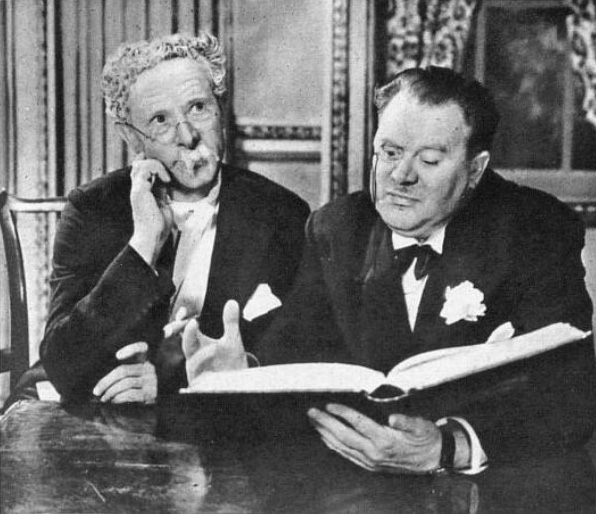
It would be during this period, shortly after the war, when Cary Grant could visit Britain again on a regular basis and Hearne was an almost constant presence on the country's stages and screens, that their friendship was really forged. Hearne had been an avid follower of the Hollywood star for years, appreciating the acrobatic techniques, as well as all the other comic gifts, that he brought to many of his performances (such as the spectacular, and perfectly executed, pratfalls in Bringing Up Baby, along with the special circus wrist hold that allowed him to keep Katharine Hepburn dangling above the collapsing brontosaurus bones, as well as the clever tumbling tricks in Holiday). Now Grant had the opportunity to see Hearne, once again, in the flesh, and witness how far he had progressed with his own mastery of the art of physical comedy.
They met briefly in April 1946, when Grant was visiting his mother back in Bristol and Hearne was introduced to him by a group of mutual friends from the old music hall days. A more meaningful connection came at the end of the following year, when Grant was able to see Hearne in action on stage, at the Regal Theatre in Edmonton, in the pantomime Mother Goose.
The production, as usual, allowed the comedian to perform a range of his best routines. A solo sketch in which he struggled to play a sousaphone, becoming increasingly entangled in it and eventually rolling around the stage angrily complaining about it, was a particular favourite with the audience, and caused the visiting star (whose similar bit of business with a fancy chair in The Awful Truth had in turn delighted Hearne) to collapse with helpless laughter.
Delighted by what he had witnessed, Grant later went backstage to congratulate Hearne and it soon became clear to both, as they talked and made each other laugh, that they were genuinely kindred spirits. From this point on they stayed in touch, celebrated each other's achievements, and met whenever possible.
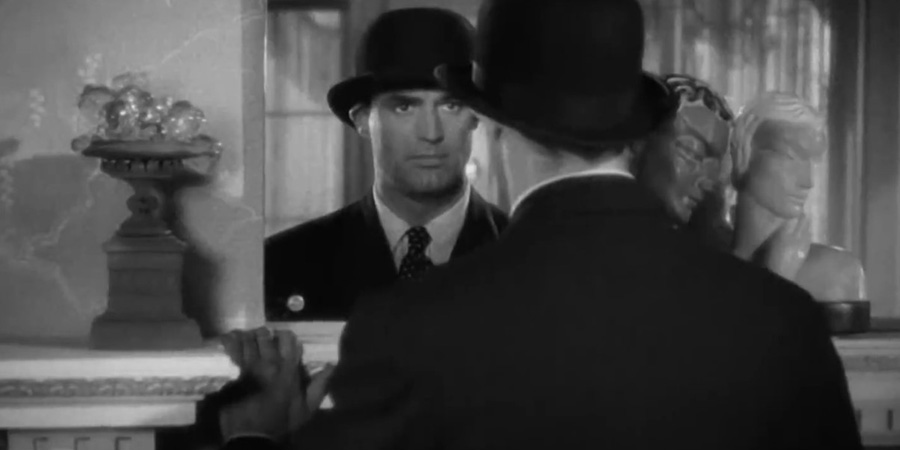
Grant relished these occasions. There were few people in Hollywood, other than the odd stunt man, with whom he could converse (and exchange insights) about the special technique of acrobatic comedy, but now, back in Britain, he could sift through all the granular details with arguably the best of the breed.
Grant, however, was not merely an admirer of Hearne. He was also now, in a very discreet way, a patron.
Whenever he had an opportunity, for example, he would enthuse about his friend 'Dickie' to (amongst others) Ed Sullivan, whose TV variety show was already one of the biggest of its kind in America ('He has,' Grant would say excitedly of Hearne, 'forty-nine different ways to fall over!'). Sullivan, eventually, acted on Grant's advice and joined him in England over the Christmas period in 1953 to see Hearne perform in pantomime, in Cinderella at the London Palladium. Playing the Baron, but really mainly just reprising his tried-and-tested solo routines, he was at the peak of his powers, entrancing the audience whenever he stepped into sight.
One moment in particular deeply impressed Sullivan. Entitled 'The Lancers', it was a sequence Hearne had been performing since the mid-1930s (when he 'inherited' it from his late fellow comic Tom D. Newall), which saw him mime a jolly quadrille dance with a crowd of imaginary partners who pulled him from one direction to the next as the music played on. The American was entranced by his skill, style and grace as he seemed to lose himself in the scene, and resolved then and there to book him, and that routine, for his Stateside show.
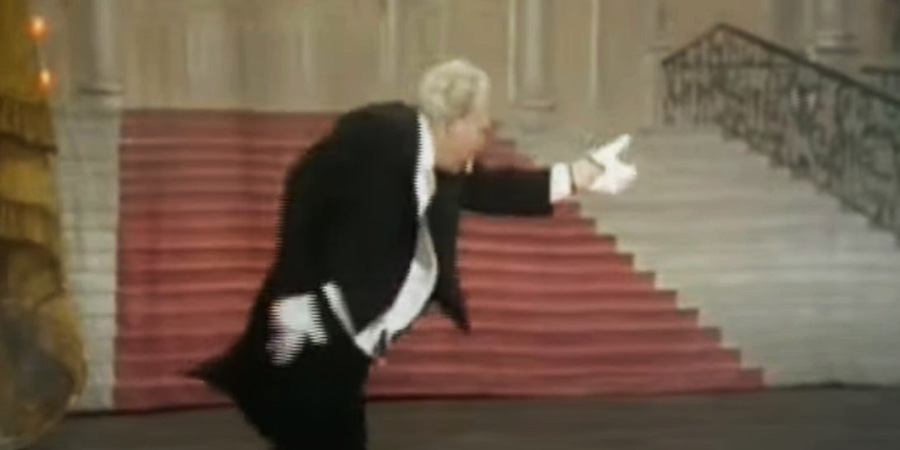
Hearne, once other commitments allowed, duly flew over, performed his dance, and finished by flying over his host's bent back by way of a finale. The applause at the time, and the reviews the following morning, underlined what an exceptional triumph it had been.
'No British performer ever has scored the tremendous hit achieved by Richard Hearne on American national TV', Sullivan proudly proclaimed in his own newspaper column. 'On this show I have used many English stars: Margot Fonteyn, Moira Shearer, Audrey Hepburn, James Mason, Beatrice Lillie, Gracie Fields, Sarah Churchill, and others have made their first appearances on American TV on our stage. Norman Wisdom was one of the British comedians I have imported, and Norman Evans another. All of them won tremendous American acclaim.
'But there was something about Mr Pastry, the determined enthusiasm of his dancing with an imaginary partner, that really charmed the U.S., while tickling its funny bone. American newspapers gave him ecstatic notices. Sid Shalit, writing in the New York Daily News, greatest circulation in the U.S., summed it up: "You missed a very great talent, a very great talent, if you failed to catch Richard Hearne, the English comedian, on the Ed Sullivan show last Sunday. His pantomime in his hilarious Lancers' dance was wonderful. Let's see more of him."'
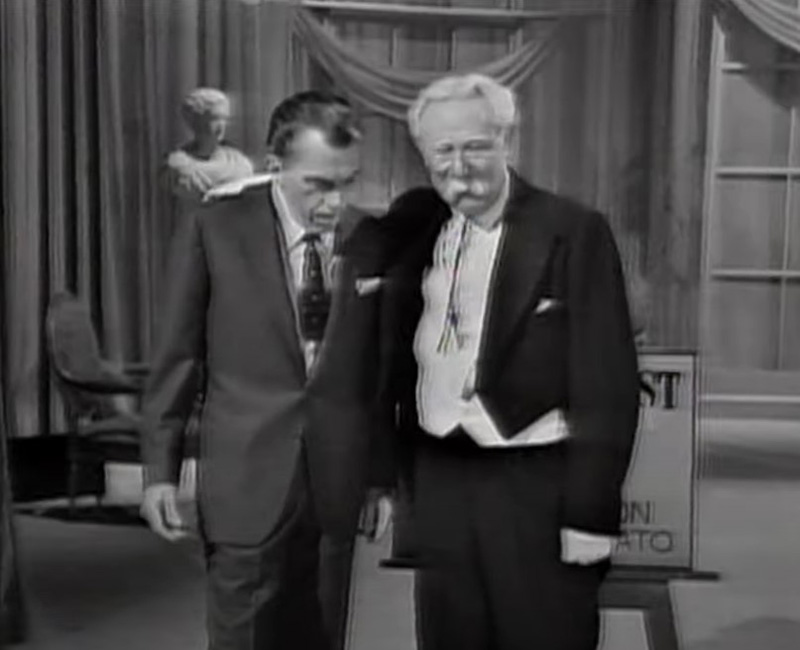
Sullivan assured his readers that they would indeed soon be seeing more of Hearne and Mr Pastry: 'I'm bringing him back to America for three more TV shows. This time, I'm hopeful he will bring along the wife and two daughters to whom he referred over the CBS-TV coast-to-coast network. He said he felt lonely without them looking. We don't want Mr. Pastry to feel lonely, and I'm sure that he doesn't feel that way now that cab drivers, elevator operators, hotel clerks and policemen hail him as he walks along our streets.
'In other words, Mr Pastry found that America also has millions of the young in heart. And they want him to come back ...'
Sullivan would indeed keep bringing Hearne back throughout the next decade or so (there would be more than twenty appearances in all - a record for a British performer), always thanking Grant for that original suggestion. Grant himself (who also pulled some strings so that several of Hearne's short films would be screened in cinemas before re-runs of his own movies - Mr Pastry Does The Laundry, for example, was coupled in some theatres with Gunga Din) would remain typically quiet about his role in Hearne's American success, restricting himself to a private call or a card of congratulation after each new TV triumph.
Hearne, however, would always be grateful for the support, and was similarly appreciative of Grant's own big screen performances. Each knew that they could trust the other's judgement, and benefit from his observations, from one pro to another (recognising in each other's efforts, as Grant once put it, 'the distillation of experience').
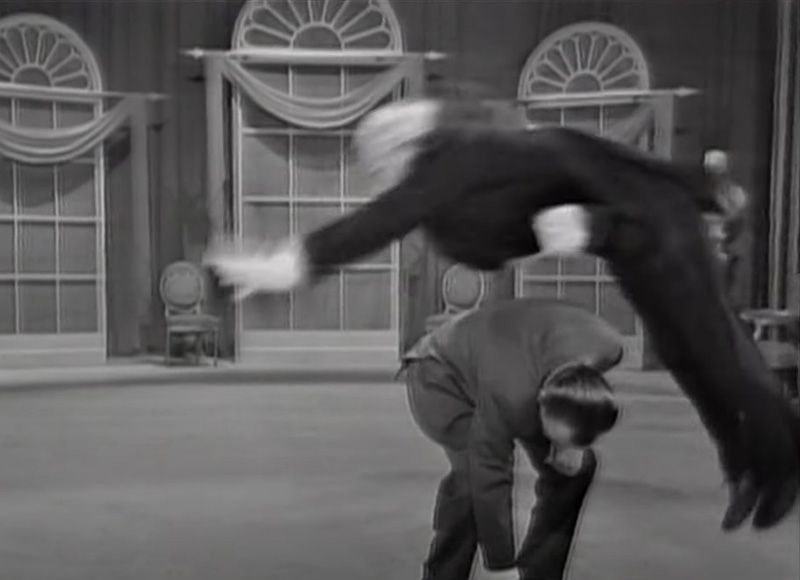
There was always much to praise. Grant was entering into the final phase of his long and brilliant career, starring in such instant classic movies as To Catch A Thief (1955), North By Northwest (1959) and Charade (1963). The gracefully agile way that he moved, choreographed his scenes and sneaked in some clever little technical tricks was admired hugely by his old friend back in Britain (who also regarded him, with eminently good reason, as the finest exponent of comic double-takes in the business).
When Grant came over to film in England, such as for Indiscreet (1958) - in which he performed a gloriously joyous square dance that brought back memories of Hearne's famous 'Lancers' mime - or The Grass Is Greener (1960), he would make sure that he saw Hearne's latest performance, which was sometimes in a cabaret, circus or even an 'ice revue' as well as a theatre show or pantomime. They would also, when practicable, catch up on each other's recent experiences over a leisurely drink backstage (the star would have something of a regular circuit of unpublicised 'fun' assignations during these trips, which included, aside from spending time with Hearne, socialising with whatever other comic acts were starring in summer or festive seasons; eating skate and chips and downing a few pints with his cousin in various Bristol pubs; driving his mother to Clevedon for afternoon tea; visiting the family of his old friend George Michael, who used to run a café in Coldharbour Lane when Archie Leach was lodging nearby; sneaking into London's Brick Lane to share a salt beef sandwich with the Daily Mirror journalist Marjorie Proops; and, in later days, taking Eric Morecambe and his wife out to dinner).
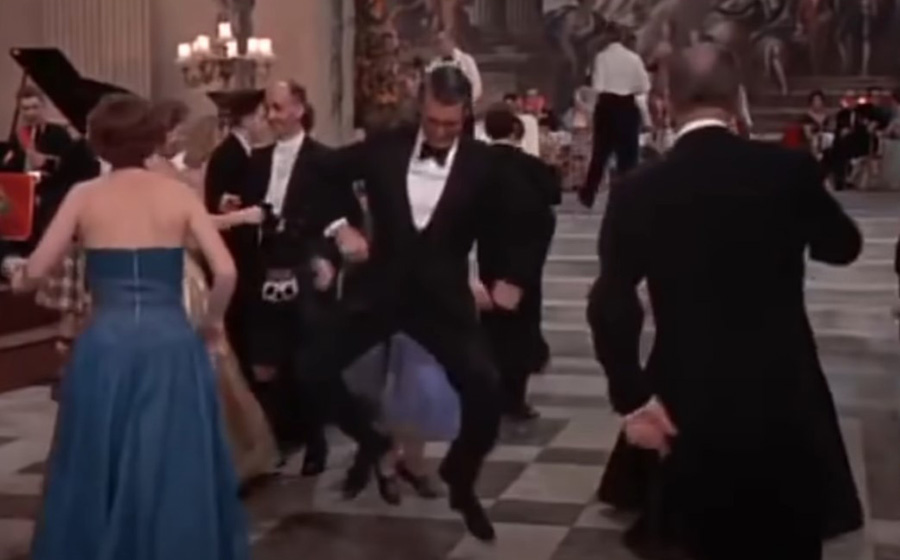
Hearne, by now, had his own television show, featuring Mr Pastry, which began on the BBC and would go on to find alternative homes on various commercial channels over the years. A charming contribution to early children's TV entertainment, but also a showcase for classic slapstick comedy technique, Grant not only made a point of watching the programme whenever he was in Britain but also arranged to have recordings sent over to his home in Palm Springs, where he would sometimes screen them privately in the company of other physical comedians such as Stan Laurel, Buster Keaton, Bert Lahr and Harold Lloyd.
One of the routines that always elicited murmurs of appreciation from these seasoned experts concerned a shoe shop scenario. A customer would come in, ask to buy a new pair of shoes, and Mr Pastry would get him to remove his own shoes and then start measuring his foot. At this point, another customer would enter the shop, and Pastry, distracted, would rush over to serve them while still absent-mindedly holding the other man's shin, causing him to hop along helplessly behind him as he rushed up and down ladders seeking the precise items requested. Another customer would then arrive, and the whole process would be repeated, but now faster and more frenetically.
As a sketch it had a simple skeleton, but as a performance it had endlessly fascinating flesh. It was executed with the kind of intelligence, energy and finesse that only added to Hearne's already large American following.
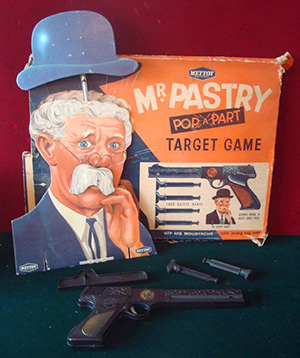
Back in the UK, the character of Mr Pastry was not just a huge television success (his show was now popular in other countries as well, including France, where he was known as 'Papa Gateau', and Germany, where he was called 'Mr Sugar Tart') but also something of a merchandising phenomenon, with spin-off products including records, books, comics, figurines, confectionary and even, more than a little bizarrely, a Mettoy Mr Pastry Target Game (which invited - presumably his less avid - young fans to shoot his hat off with a pistol). He also inspired numerous other comic performers who later played similarly old but energetic old men (Clive Dunn's Corporal Jones in Dad's Army, for example, would bear a close family resemblance to Hearne's comic creation), or more youthful but similarly well-meaning bumblers (Rowan Atkinson's Mr Bean being one such chip off the old block), or those who simply loved - after watching him perform it - the fine art of physical comedy (both Jennifer Saunders and Miranda Hart, as children, were among his keenest admirers).
With a strange sense of symmetry, incidentally, both men would share the distinction, during this era, of having declined the opportunity to play one of British popular culture's key fictional figures. In Grant's case it would be James Bond, and in Hearne's, Doctor Who's titular traveller.
Grant was invited (repeatedly) to play Bond at the start of the Sixties by the producer Cubby Broccoli. They were good friends (the former had been best man at the latter's wedding), but, although Grant was open in principle to playing the character in a one-off movie, he was not interested in Broccoli's ambition to create a series, and so, very politely, he passed on the proposal.
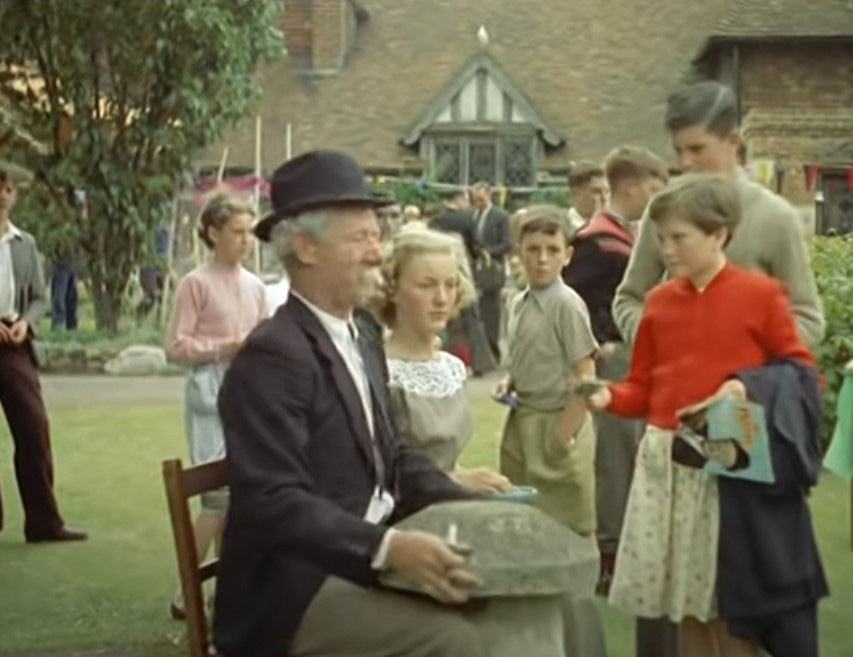
Hearne was sounded out about becoming the new (fourth) Doctor Who star in the early Seventies by the BBC producer Barry Letts. The current incumbent, Jon Pertwee, had confided that he was planning on leaving the role, and so Letts was pondering his possible replacement. A great admirer of Hearne (whom he considered to have 'a magic touch'), Letts called him in to Television Centre to discuss being the new Doctor, but, when the producer disagreed with his suggestion that the role be played in a similar way to that of Mr Pastry, Hearne was happy to drop out of contention (and the part, of course, went to Tom Baker).
Both men would withdraw from their profession on their own terms. Grant, having grown 'tired of tripping over cables', and increasingly unimpressed by the changing styles (and standards) of Hollywood filmmaking, quietly stepped away from the business in the mid-1960s. Hearne followed suit at the start of the next decade, saying that that television's drain on new material was proving too much of a strain, and that he did not want his much-loved character to be associated with what he considered to be a new trend for 'blue' comedy styles.
Both men, however, would remain fans of, as well as friends with, each other for the rest of their lives. When Hearne died, aged seventy-one, on 23rd August 1979, Grant mourned him privately, while pointing anyone inquiring to the comments he had made back in the Sixties, in a US magazine article, where he had rated Hearne as standing alongside Chaplin, Cantinflas, Marcel Marceau, Jacques Tati and Fernanel as one of the 'great pantomimists', able 'to establish communication silently with an audience, using the minimum of movement and expression [and knowing] how best immediately and precisely to effect an emotional response'.
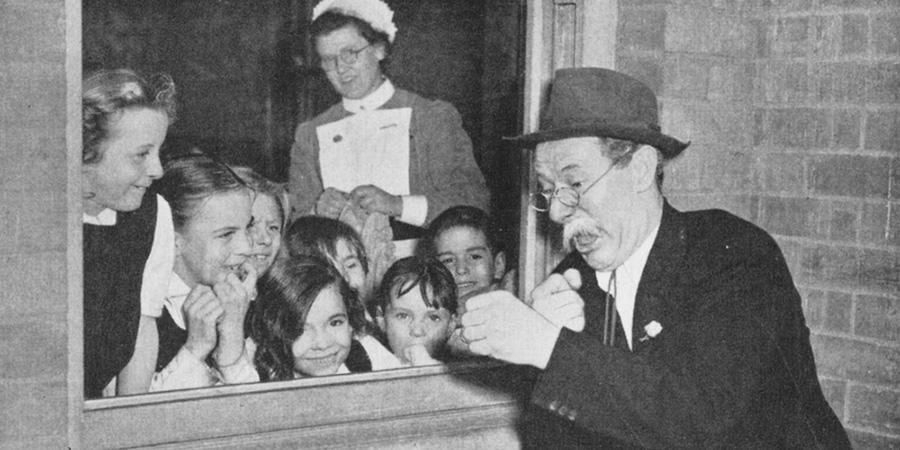
Grant himself would pass away seven years later, at the age of eighty-two, on 29th November 1986. The connection between himself and the man responsible for Mr Pastry would be one of those unexpected little details that eluded the obituarists, and faded subsequently away into obscurity.
Watch the two men now, nonetheless, and one will surely spot the skill, and the spirit, that they always had in common. 'Clowns with a heart', as Hearne once put it, they mastered their craft, with graft and class, for body and soul, solely to serve the aim of making us laugh.
Help us publish more great content by becoming a BCG Supporter. You'll be backing our mission to champion, celebrate and promote British comedy in all its forms: past, present and future.
We understand times are tough, but if you believe in the power of laughter we'd be honoured to have you join us. Advertising doesn't cover our costs, so every single donation matters and is put to good use. Thank you.
Love comedy? Find out more
